- Luật
- Hỏi đáp
- Văn bản pháp luật
- Luật Giao Thông Đường Bộ
- Luật Hôn Nhân gia đình
- Luật Hành Chính,khiếu nại tố cáo
- Luật xây dựng
- Luật đất đai,bất động sản
- Luật lao động
- Luật kinh doanh đầu tư
- Luật thương mại
- Luật thuế
- Luật thi hành án
- Luật tố tụng dân sự
- Luật dân sự
- Luật thừa kế
- Luật hình sự
- Văn bản toà án Nghị quyết,án lệ
- Luật chứng khoán
- Video
- NGHIÊN CỨU PHÁP LUẬT
- ĐẦU TƯ CHỨNG KHOÁN
- BIẾN ĐỔI KHÍ HẬU
- Bình luận khoa học hình sự
- Dịch vụ pháp lý
- Tin tức và sự kiện
- Thư giãn

TIN TỨC
fanpage
Thống kê truy cập
- Online: 223
- Hôm nay: 198
- Tháng: 1621
- Tổng truy cập: 5245625
2038 Timeline
Older computers are at risk of experiencing major software malfunctions
The Year 2038 problem (also known as "Y2K38" by analogy to the Y2K Millennium bug) gains considerable public and media attention this year. It affects programs written in the C programming language. These were relatively immune to the earlier Y2K problem, but suffer instead from the Year 2038 problem. They use a library of routines called the standard time library. This takes a stored, 32-bit integer and interprets the current value as the number of seconds which have passed since 00:00:00 UTC on Thursday, 1st January 1970.
Because of the limited number of possible values that can be derived from this 32-bit integer, the farthest time that can be represented in this way is 03:14:07 UTC on Tuesday, 19th January 2038. Any times beyond this point will "wrap around" and be stored internally as a negative number, which these systems interpret as a date from 1901, rather than 2038. This is called integer overflow.
For older computers that still use this system, major problems begin to arise with file systems and databases, due to erroneous calculations. Fortunately, most systems have been upgraded by now, and little overall damage is done.

NASA's Trident spacecraft arrives at Neptune
Trident is a mission to the outer planets, proposed in 2019 as part of NASA's Discovery program. Launched in 2026, the probe makes gravity-assist flybys of Venus (2027), Earth (2028 and 2031), Jupiter and its moon Io (2032), before reaching Neptune in 2038, with a focus on its largest moon, Triton.
Voyager 2, the last mission to Triton, flew past in 1989 at a distance of 40,000 km (25,000 mi). It found evidence of geological activity, with a young surface and relatively few impact craters, several cryovolcanoes and a very thin atmosphere. Despite evaporation taking place during "summer" periods, the moon had the coldest average temperature in the Solar System at just 35.6 K (−237.6°C), only 35°C higher than absolute zero.
After this fleeting glimpse by Voyager 2, the icy body would remain unvisited for another 50 years, leaving many questions unanswered. Trident would aim to solve these scientific mysteries, while obtaining a near-complete map of the surface (Voyager 2 only mapped 40%) and providing high-resolution images.
The spacecraft performs a sole flyby, passing through Triton's thin atmosphere at 500 km (310 mi) altitude, sampling its ionosphere with a plasma spectrometer and performing magnetic induction measurements to assess the potential existence of an internal ocean. Its payload also includes an infrared spectrometer, narrow angle camera, and wide-angle camera.
In addition to studying Triton, the probe reveals new insights into Neptune – and therefore advances the understanding of "ice giants", which are the most common type of exoplanet.
A strong incentive to launch the mission is a rare and efficient alignment between Jupiter, Neptune, and Triton in 2038. Additionally, Neptune's orbit around the Solar System during this time offers the best opportunity to study Triton's ice plumes – missing this window means waiting for another century.**
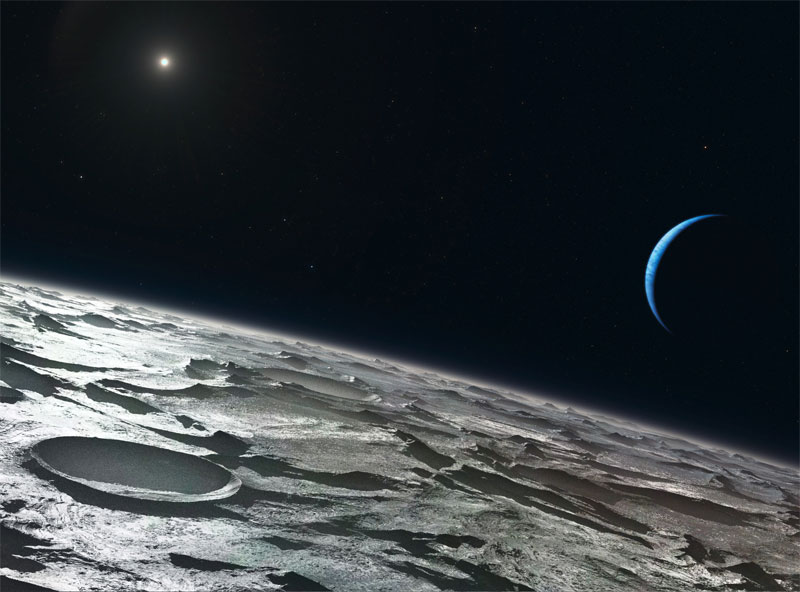 Credit: ESO/L. Calçada
Credit: ESO/L. Calçada
The New Horizons probe is 100 AU from the Sun
The New Horizons probe was launched in 2006, arriving at Pluto in 2015.* After surveying the dwarf planet and its five moons, the spacecraft headed towards the Kuiper Belt where it studied a small, icy body. This phase of the mission lasted until 2022,* after which New Horizons began journeying to a boundary known as the outer heliosphere, where the solar wind meets the local interstellar medium. By 2038, it has reached 100 astronomical units (AU) from the Sun* – equivalent to 100 times the distance between the Earth and Sun – and is moving in the direction of the constellation Sagittarius that includes the supermassive black hole at the centre of our galaxy.
Even though it was launched much faster than any outward probe before it, New Horizons will never overtake Voyager 1 or Voyager 2 as the most distant human-made object. Close flybys of Saturn and Titan gave Voyager 1 an advantage with its gravity assist. When New Horizons reaches 100 AU, it is travelling at 13 km/s (29,000 mph), around 4 km/s (8,900 mph) slower than Voyager 1 at that distance.
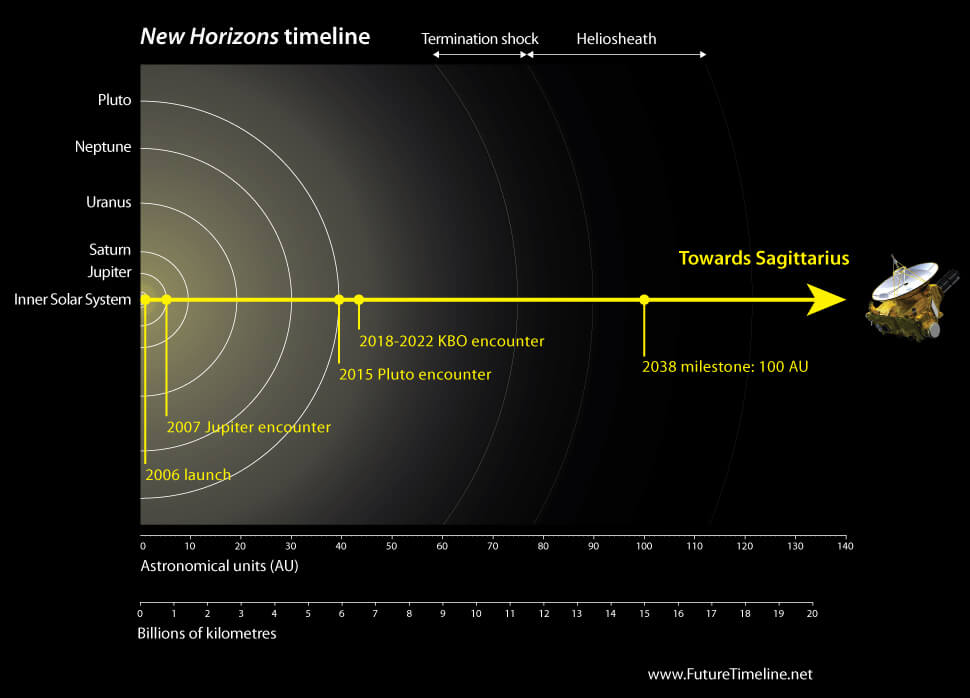
Capital punishment has greatly declined in use
At the start of the 20th century, capital punishment was used in almost every part of the globe – including the most developed nations. In the latter decades of the century, however, many countries abolished it. The last guillotining in France was conducted in 1977, while in the UK, the death sentence for treason was ended in 1998.
Americans' views on the issue varied significantly,* but the number of executions performed in the US showed a consistent long-term decline. Peaking in the mid-1930s, they fell dramatically thereafter, briefly rising in the 1990s before dropping again in the 21st century. Between 2000 and 2010, executions in the US plummeted by over half.** It had also become far cheaper to imprison people for life.*
By 2010, nearly 50% of countries had outlawed the death penalty for all crimes.* This reflected concerns over the possibility of executing the innocent, as well as the morality of such brutal punishments in modern civilised society. Public opinion continued to shift in favour of bans – a trend fuelled by growing access to information brought by the Internet, media and technology in general. This included mistakes revealed by DNA evidence, for example, as well as high-profile media investigations, and the work of international human rights organisations such as Amnesty.
Another factor sustaining this trend was the growing urbanisation and democratisation of the planet,* with cities tending to favour more liberal and progressive policies than smaller, traditional rural communities. Yet another factor was the ongoing influence of feminism in society, with women tending to oppose it more than men.**
However, capital punishment remained entrenched in some regions: notably China, which held more executions than the rest of the world combined, killing thousands of its citizens every year. Iran, North Korea, Saudi Arabia and Yemen were also notorious for their executions, sometimes carried out for highly dubious reasons (e.g. sorcery*).
By the late 2030s, virtually all nations in the developed world have abolished the death penalty – while a minority of repressive and pariah states continue to practice it. Though its prevalence has fallen in Muslim society as a whole,* the global abolition of capital punishment remains elusive, for now.
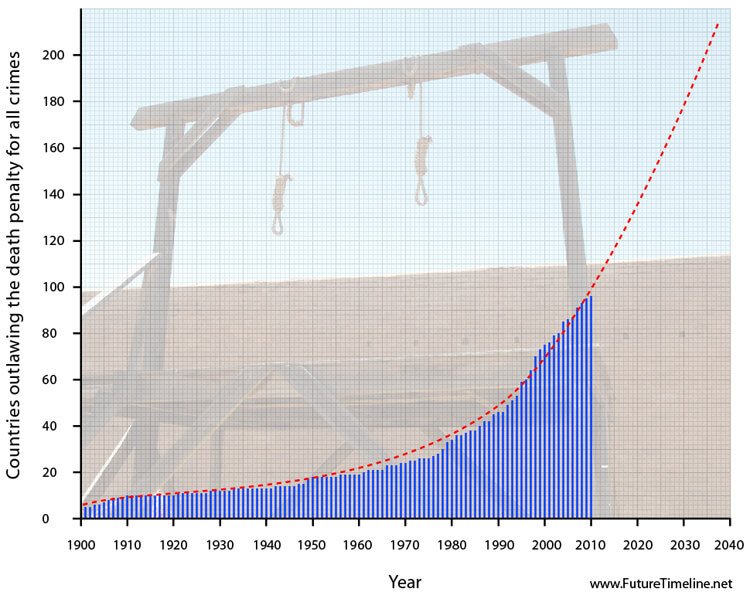
Teleportation of complex organic molecules
In the early 2000s, scientists were able to transfer particles of light (with zero mass) over short distances. Further experiments in quantum entanglement led to successful teleportation of the first complete atom. This was followed by the first molecules, consisting of multiple atoms. By the late 2030s, the first complex organic molecules such as DNA and proteins are being teleported.*
 © Yunxiang987 | Dreamstime.com
© Yunxiang987 | Dreamstime.com
The FIFA World Cup trophy is replaced
The current trophy has been in use since the 1974 World Cup. There is only space for 17 countries to be engraved on its base. In 2038, the final name plaque is filled in, and a replacement cup is commissioned with a new design. Like its predecessor, this is made of 5 kg (11 lb) of 18 carat gold.*

Coal power has been phased out by Germany
During the 20th century, Germany obtained its electricity predominantly from fossil fuels (particularly coal) and then later also nuclear power. As Europe's largest consumer of electricity, its carbon emissions were substantial, ranking sixth in the world. At the dawn of the 21st century, however, a radical change began to occur as its supply shifted to new, less polluting forms of energy.
In 2010, the German government published Energiewende ("energy transition") a key policy document outlining targets for increasing the share of renewables in power consumption, which included greenhouse gas (GHG) emission reductions of 80–95% by 2050 (relative to 1990).
Following the Japanese Fukushima disaster of 2011, the government removed the use of nuclear power as a bridging technology and the decision was taken further to phase out nuclear altogether by 2022. This move triggered a brief rise in coal, to make up the shortfall. However, renewables were expanding rapidly, with solar and wind forming an ever-larger share of electric generating capacity. In 2019, a government-appointed coal commission introduced a proposed pathway to phase out all coal power within two decades.
By the end of the 2010s, Germany had about 40 GW of installed coal power capacity, with 21 GW fired by bituminous coal – referred to as "hard coal" by Germany's Federal Network Agency – and 19 GW by lignite, or "brown coal". A bituminous coal plant, Dattaln 4, entered service in mid-2020, adding 1.1 GW at a cost of €1.5 billion ($1.6 billion), becoming Germany's last ever coal plant to be newly connected to the grid.
Between 2020 and 2026,* hard coal capacity reductions – implemented using auctions organised by the Federal Network Agency – saw many plants voluntarily taken offline in the north, west and south of the country. As renewables continued to surge in capacity, forced closures occurred in the latter part of the decade and into the 2030s. Of the 84 sites operational during 2019 (when the strategy was first announced), just a handful now remained.
The phase out had commenced in western Germany, to soften the impact in the economically poorer eastern side of the country. With bituminous coal disappearing from the energy mix, attention now turned to the softer lignite, concentrated mostly in the east.
By 2038, the final plant shutdown has occurred.* A compensation plan of some €40 billion ($43.7 billion) is further helping the transition, which includes adaptation payments for older workers in lignite mines, hard coal and lignite power plants who lost their jobs due to the coal exit plans. This provides a maximum total of €5 billion ($5.5 billion) by 2048.*
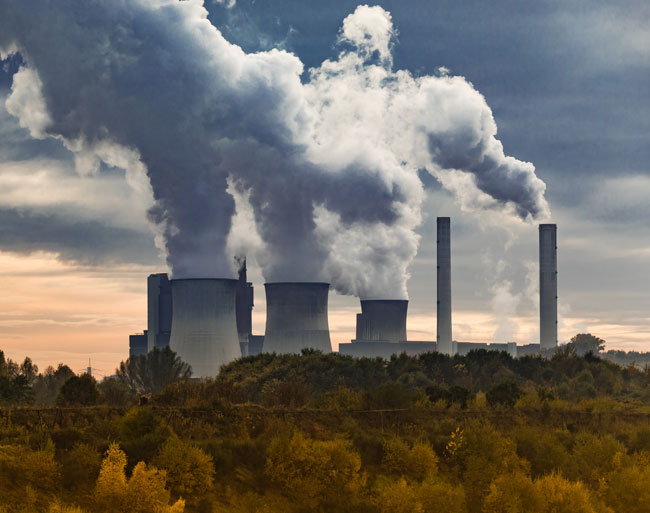
The space industry exceeds $1tn worldwide
By the late 2030s, the worldwide space industry exceeds $1 trillion in size.* This represents a quadrupling compared to 2010* and a tenfold increase since the start of the 21st century. The rapid growth in this sector has been fuelled, in large part, by explosive demand for high-speed Internet services, including the recent establishment of a global, quantum-encrypted satellite network for ultra-secure communications.* However, a number of other areas have started to boom now, including space tourism (via space planes and very high-altitude balloons) and resource extraction from near-Earth asteroids. The latter, while still accounting for only a tiny fraction of global commodities, is now considered a relatively routine activity as the industry is sufficiently mature in technology.
In 1997, private investment in space overtook government spending for the first time. This trend continued into the 21st century, with space becoming more and more commercialised. Access to space was being made cheaper and easier by a new generation of launch vehicles. These and other technological innovations were enabling even small companies to compete and do what only big government agencies had done in the past. Some of the most famous entrepreneurs to emerge during this time included Elon Musk, Jeff Bezos, Peter Diamandis, Robert Bigelow and Richard Branson; but many less well-known individuals and groups were also taking advantage of the changing industry landscape. Crowd-funding, for example, meant that even casual Internet users could now have a stake in the development of space projects – like the new class of "CubeSats". These tiny spacecraft could hitch a ride and piggyback alongside the larger and more expensive missions.
While private commercial enterprises are the dominant driving force, government space agencies still have a role to play. NASA has been developing its manned Mars program and this decade sees its astronauts walking on the Red Planet for the first time. In addition, a number of huge telescopes are being built that dwarf any previous observatory. China, Europe, India, Japan, Russia and other agencies have also made progress in human exploration, with an international collaboration to establish the first base on the Moon.* Meanwhile, new countries are now appearing on the scene and establishing their own national space agencies, as their economies become advanced and rich enough to do so. The number of countries with independent launch capability has also continued to increase.
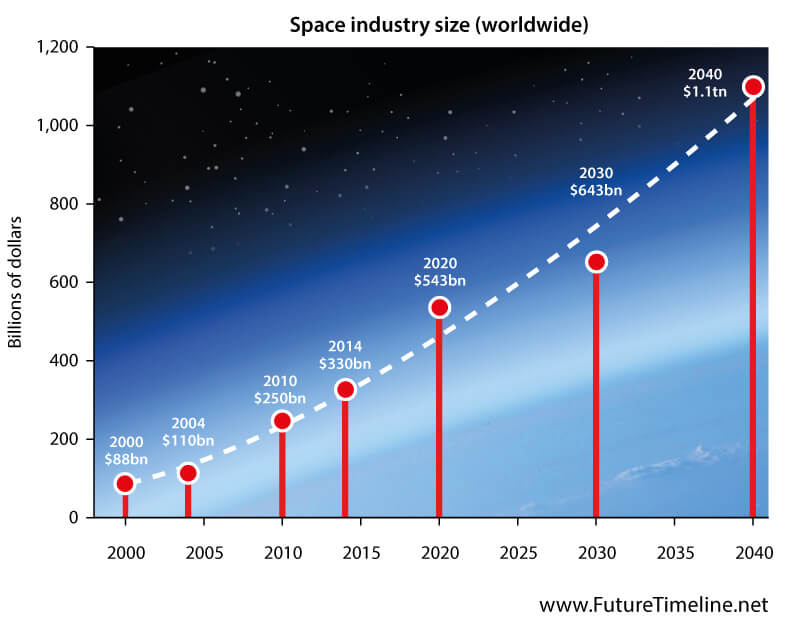
By FutureTimeLine
Các bài viết khác
- Từ sự kiện Tổng biên tập báo TIME Greta Thunberg là Nhân vật của năm 2019 đến báo cáo Biến đổi khí hậu Phúc trình của IPCC báo động đỏ cho nhân loại 82021 (15.01.2020)
- Làn sóng trả mặt bằng: Hết thời nhà phố chỉ cần dán giấy là có khách thuê! (30.06.2020)
- Vì sao nhà đầu tư khó “lướt sóng” bất động sản lúc này? (30.06.2020)
- IMF: "Đống đổ nát" kinh tế toàn cầu đang ngày càng tồi tệ hơn (30.06.2020)
- Tương lai nào cho tòa nhà Trụ sở hỏa xa? (30.06.2020)























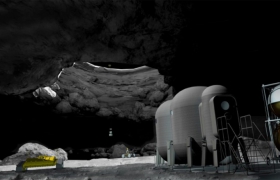


























 Yahoo:
Yahoo: 